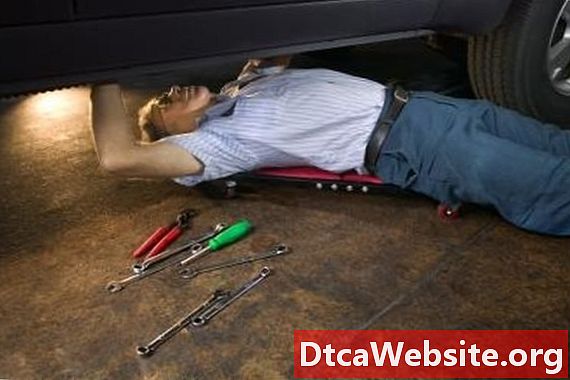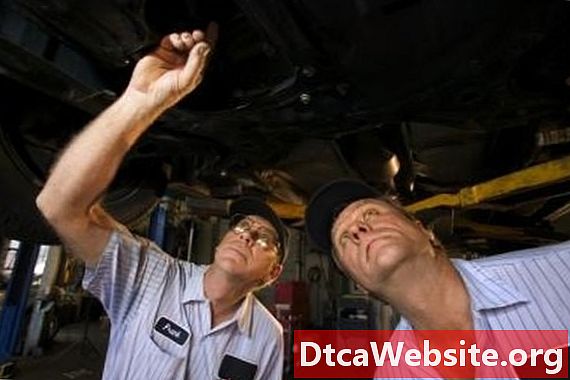
Contenu

All front-drive and all-wheel-drive vehicles use half-shaft axles to connect the transmission to the front and sometimes rear wheel hubs. The joints at either end of the axle that allow it to articulate with suspension movement are called constant velocity (CV) joints because they allow the axle to bend while continuing to spin. Constant velocity joints typically last around 100,000 to 150,000 miles. Bad CV joints typically exhibit very telling symptoms, but diagnosing inner versus outer CV joint failure can be a bit tricky.
Step 1
Shift the vehicle into drive with your foot on the brake and listen. A bad CV joint will exhibit a clunking noise as the transmission engages. A clunking sound, during this phase of testing, can indicate either an inner or outer CV joint failure; if you listen closely, you may be able to tell which side its coming from.
Step 2
Accelerate the car to 10 MPH and maintain speed. Quickly depress the accelerator so that the car shoots up to 20 MPH and listen for another clunking noise. Accelerate from 20 to 30 MPH and listen for noises, then 30 to 40 MPH. You may also hear a light thump under sudden braking.
Step 3
Shift the car into reverse and quickly jab the throttle a few times. If you hear a similar sounding but far softer clunk as you did when accelerating, you almost certainly have a bad inner CV joint. Listen carefully for a grumbling vibration, which could indicate damage or severe wear on the inner CV joint.
Step 4
Eliminate the possibility of it being an outer CV joint failure by performing your acceleration test while driving around in a fairly tight (about 150-foot) circle. If the CV joint gets louder or quieter or noticeably changes in pitch while turning in either direction, then you have a bad outer joint. If the wheel angle doesnt noticeably affect the CV joint sound, then its the inner joint.
Confirm your diagnosis by crawling under the car and manually checking the CV joint. Look for cracking and splitting around the rubber CV joint boot, and look for evidence of fresh, excess grease on the transmission, cross-member or suspension components around the joint. Grasp the axle shaft as close to the inner CV joint as possible and try to push it back and forth. Then try twisting it. Almost all CV joints have a little bit of play, but any more than 1/8-inch in any direction indicates a damaged or worn-out inner CV joint.
Items you will need
- Floor jack
- Jack stands
- Flashlight


